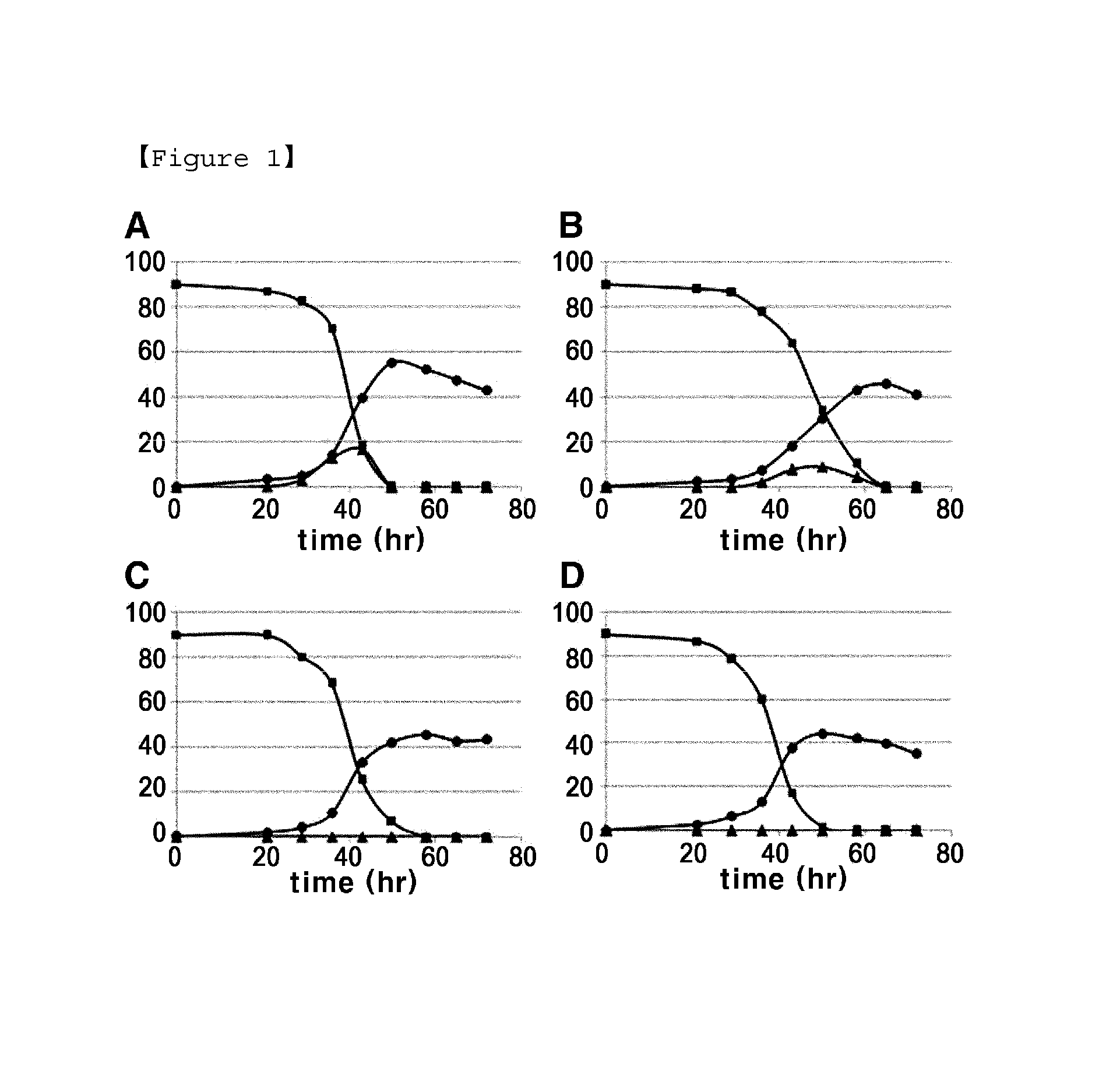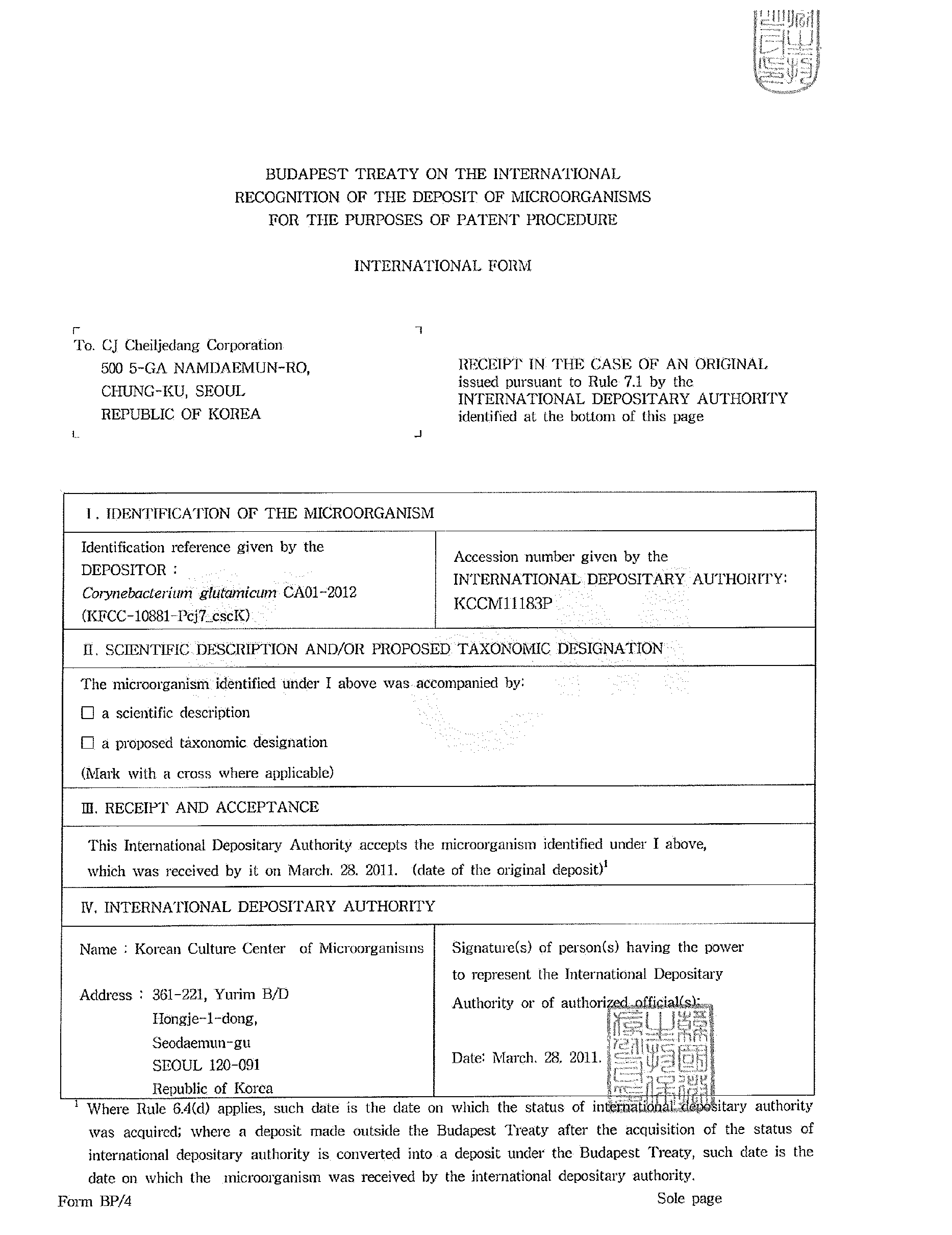Corynebacterium sp. transformed with a fructokinase gene derived from escherichia sp. and process for preparing l-amino acid using the same
a technology of fructokinase and corynebacterium sp., which is applied in the direction of transferases, microorganisms, enzymology, etc., can solve the problems of unnecessary energy consumption and achieve the effect of preventing unnecessary energy consumption and more cost-effective production of l-amino acids
- Summary
- Abstract
- Description
- Claims
- Application Information
AI Technical Summary
Benefits of technology
Problems solved by technology
Method used
Image
Examples
example 2
Introduction of Fructokinase Gene into Lysine-Producing Strain and Comparison of Lysine Productivity
[0038]An L-lysine-producing strain, Corynebacterium glutamicum KFCC10881 was transformed with the pECCG117-cscK or the pECCG117-mak vector using an electric pulse method, and kanamycin resistant colonies were selected.
[0039]The strains transformed with two fructokinase genes derived from E. coli and the strain transformed with the above described Clostridium acetobutyricum-derived fructokinase CFK (Korean Patent No. 0564805) were cultured, and their lysine productivities were compared.
[0040]To 250 ml of a corner-baffle flask containing 25 ml of seed medium (25 μl / ml of kanamycin added), each strain was seeded and cultured by shaking at 200 rpm and 30° C. for 20 hours. At this time, the seed medium (pH 7.0) had the following composition: sucrose 20 g, peptone 10 g, yeast extract 10 g, urea 5 g, KH2PO4 4 g, K2HPO4 8 g, MgSO4 7H2O 0.5 g, biotin 100 ug, thiamine HCl 1000 ug (based on 1 L ...
example 3
Construction of Recombinant Vector for Replacement of cscK Gene Promoter and Chromosomal Introduction
[0045]In order to introduce the E. coli-derived fructokinase gene into the chromosome of Corynebacterium, the vector pDZTn (Korean Patent Publication No. 2009-0107665) introduced with the transposon gene of Corynebacterium sp. was used as a basic vector. The cscK gene was selected from the two E. coli-derived fructokinase genes, because it showed much higher lysine productivity. A strong promoter derived from Corynebacterium was linked upstream of the initiation codon of the cscK gene to increase its expression level.
[0046]Based on SEQ ID NO. 17, the ORF region was only amplified, and primers (below SEQ ID NOs. 5 and 6) having a 5′ -terminal NdeI restriction site and a 3′-terminal SpeI restriction site were synthesized, and the chromosomal DNA of E. coli W strain (ATCC9637) was used as a template to amplify ORF (approximately 900 bp) of the cscK gene by PCR. At this time, PCR was per...
example 4
Comparison of Lysine Productivity by cscK Gene Expression-Improved Strain
[0050]An L-lysine-producing strain, Corynebacterium glutamicum KFCC10881 was transformed with each of the two expression vectors, pDZTn-pcj7_cscK and pDZTn-lysCP1_cscK prepared in Example 3 using an electric pulse method. The strains having replacement of fructokinase gene promoter at the transposon region on the chromosome were selected, and cultured in the same manner as in Example 2. Average concentration of the L-lysine collected therefrom was determined (Table 2).
TABLE 2Comparison of L-lysine concentration according to introductionof promoter (unit: g / L)ExperimentalAverage concentration groupStrainof L-lysine5KFCC1088133.26KFCC10881::pcj_7cscK42.17KFCC10881::lysCP1_cscK38.7
[0051]In Table 2, Experimental group 5 represents the average concentration of L-lysine collected from the strain transformed without fructokinase gene, Experimental group 6 represents the average concentration of L-lysine collected from...
PUM
| Property | Measurement | Unit |
|---|---|---|
| temperature | aaaaa | aaaaa |
| temperature | aaaaa | aaaaa |
| pH | aaaaa | aaaaa |
Abstract
Description
Claims
Application Information
 Login to View More
Login to View More - R&D
- Intellectual Property
- Life Sciences
- Materials
- Tech Scout
- Unparalleled Data Quality
- Higher Quality Content
- 60% Fewer Hallucinations
Browse by: Latest US Patents, China's latest patents, Technical Efficacy Thesaurus, Application Domain, Technology Topic, Popular Technical Reports.
© 2025 PatSnap. All rights reserved.Legal|Privacy policy|Modern Slavery Act Transparency Statement|Sitemap|About US| Contact US: help@patsnap.com


